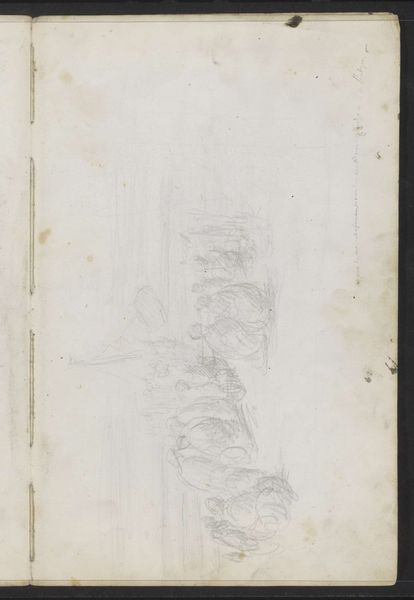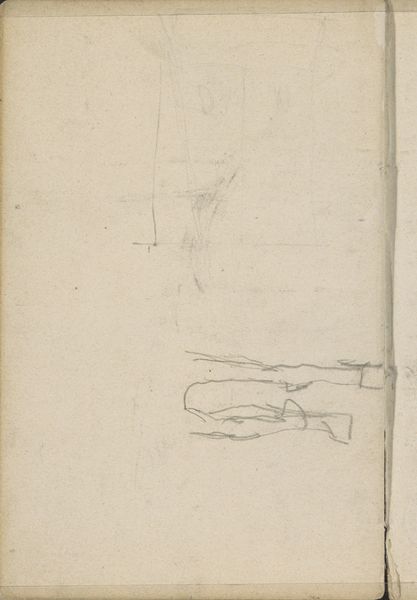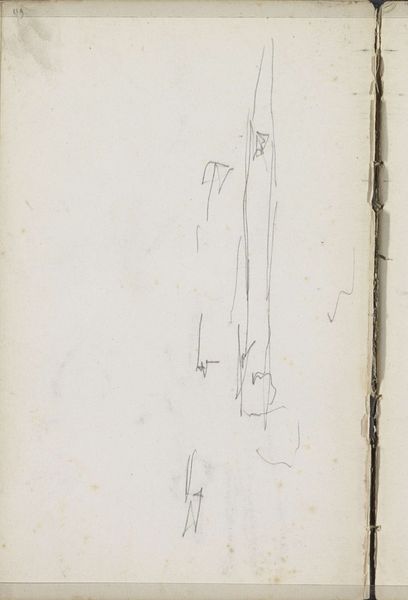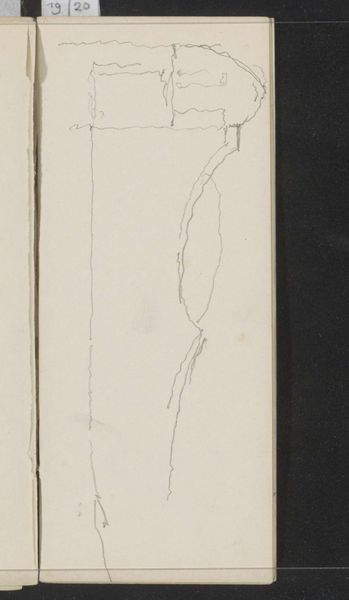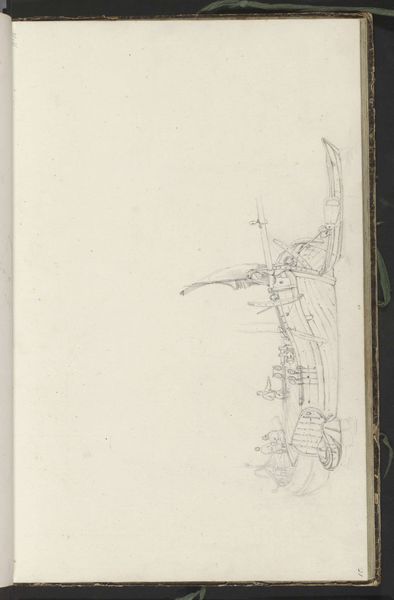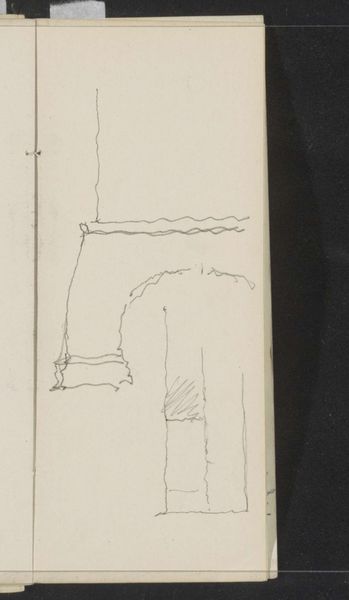
drawing, paper, pencil
drawing
amateur sketch
aged paper
sketch book
incomplete sketchy
hand drawn type
hand lettering
paper
form
personal sketchbook
hand-drawn typeface
geometric
pencil
line
sketchbook drawing
sketchbook art
Copyright: Rijks Museum: Open Domain
Editor: This is Gerrit Willem Dijsselhof's "Abklatsch van een krijttekening," a pencil drawing on paper, dating back to around 1901. It's currently held in the Rijksmuseum. I'm immediately struck by how ephemeral and almost ghostly it feels. It looks like a fleeting moment captured, but what exactly is it trying to capture? What do you see in this piece that I might be missing? Curator: What strikes me is the drawing's potential subversion of traditional artistic intentions. Instead of a polished, presentable piece, we see what appears to be a working drawing, almost like a palimpsest of thought. Consider how it relates to the artist's social and historical positioning. Is this 'incomplete' state a deliberate challenge to notions of artistic mastery and finished works, particularly relevant within the context of early 20th-century social hierarchies in the Netherlands? Editor: That’s a really interesting point. I hadn’t considered the intentionality behind its unfinished appearance. I was focused more on the visual language of geometric forms but I can see how its aesthetic can challenge power structures through resisting expectations. Do you think the geometric form has relevance? Curator: Absolutely. The presence of geometry invites further probing. Dijsselhof was invested in symbolism and art nouveau design, wasn't he? Geometry becomes a symbolic language – can the underlying structures represent idealised forms or reflect order versus chaos? The incomplete nature challenges any stable reading of identity. Do you think the ghostly rendering affects how you perceive Dijsselhof's representation of gender? Editor: I think it challenges a definite reading; it resists fixed and easily legible visual symbols. Overall, I see how considering it this way really makes me re-evaluate the artwork and its engagement with artistic norms. It moves past purely aesthetic contemplation and starts a cultural conversation! Curator: Precisely. And remember, interrogating these historical works allows us to better question contemporary systems of representation and power.
Comments
No comments
Be the first to comment and join the conversation on the ultimate creative platform.
